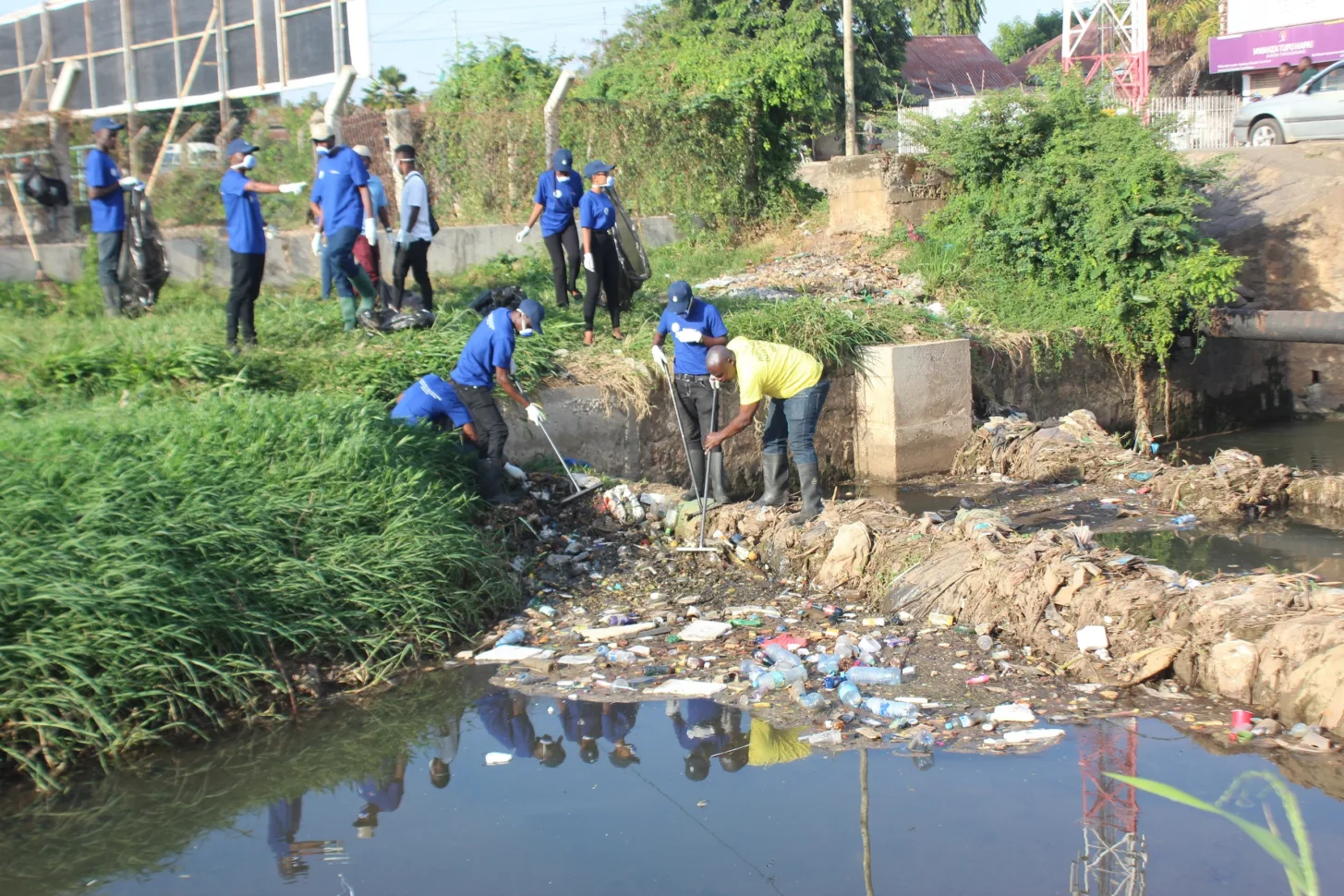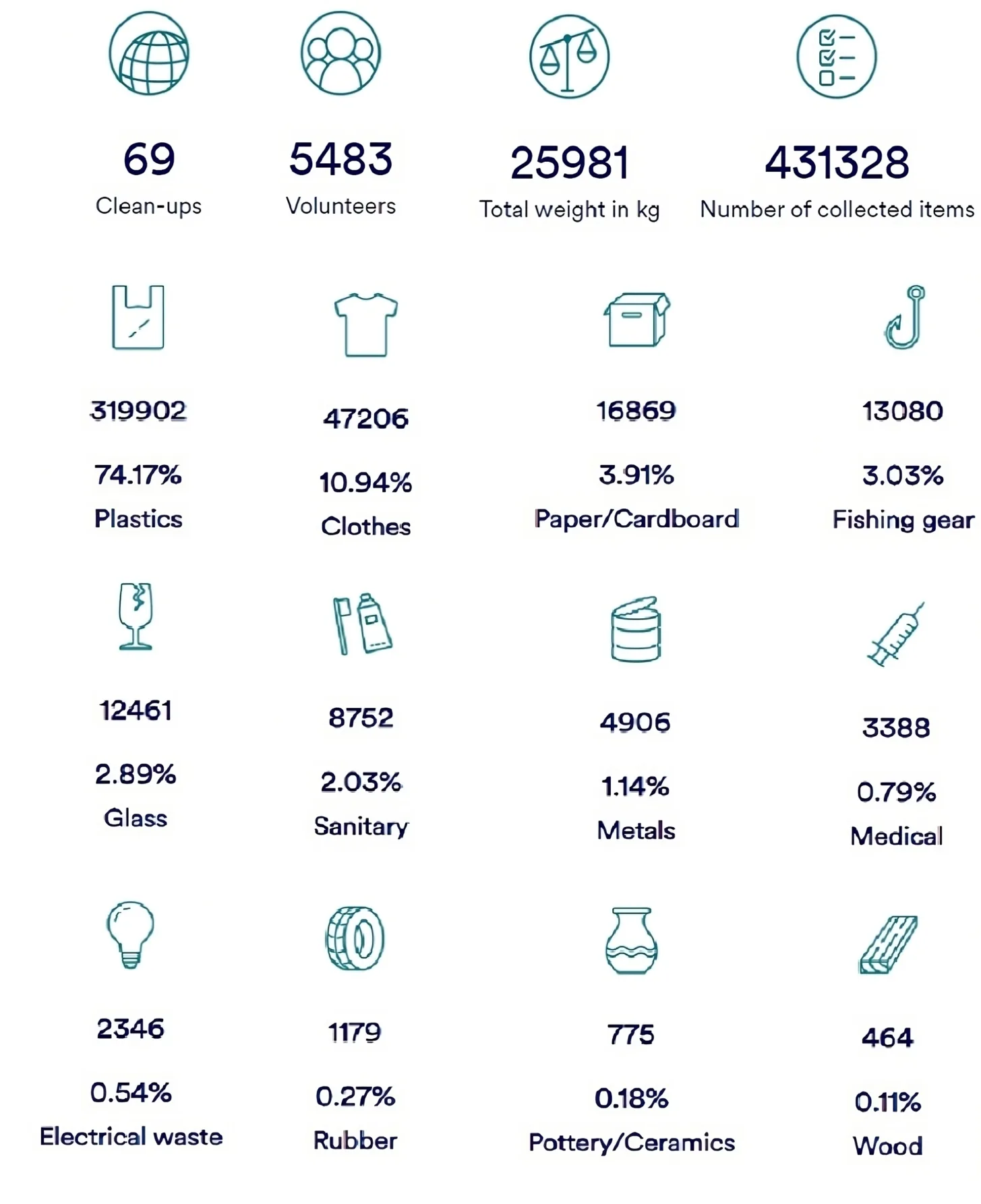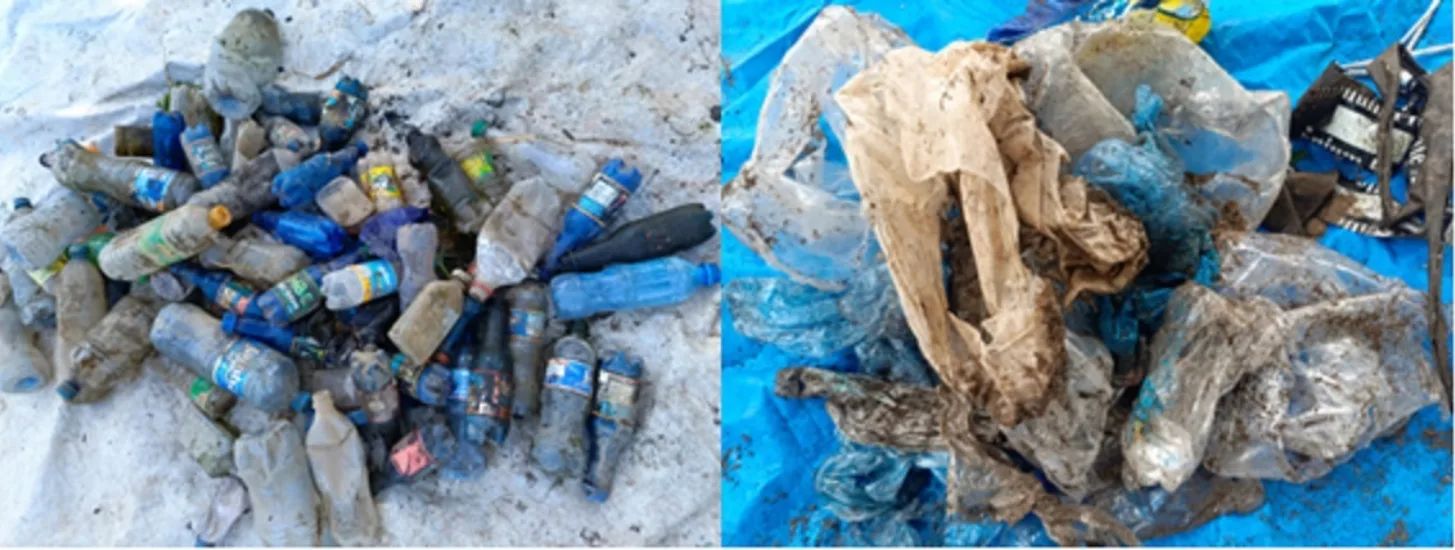End of campaign summary
Published: 24.09.2023
Updated: 24.09.2023
Farhan Khan
Senior Researcher
Over our two clean-up campaigns, ‘Clean Shores, Great Lakes’ successfully carried out 69 clean-ups across the Tanzanian shorelines of the African Great Lakes. This is how we did and what we do next.
Our second ‘Clean Shores, Great Lakes’ campaign came to a close with the clean-up of the Mirongo River on World Clean Up Day. In the second campaign, carried out in August and September 2023, we added another 34 clean-ups along the Tanzanian shorelines of the African Great Lakes, giving a total of 69 clean-ups within the project. This by far the largest co-ordinated clean-up project in East African freshwaters and we are proud of the impact we have made in such a short period of time. But, as will be explained below, this is where we take a (hopefully) temporary hiatus, but not before highlighting our key findings.

Clean-up 69 at the Mirongo River that flows into Lake Victoria
Our volunteers deserve a huge round of applause
Well over 5000 volunteers joined our clean-up campaigns collected over 25000 kg of litter or 431328 individual items. Our volunteers were drawn from several partner organisations including District Councils, market traders, fishermen, school and university students, youth organisations, and of course members of the public. To everyone that helped us make the African Great Lakes a little tidier, thanks you!
And our clean-ups were designed not to disrupt people’s livelihoods, so we started early (typically 7 am) and worked for only a couple of hours. This ‘early and fast’ strategy worked well and became a hallmark of our project.

What we found after 2 clean-up campaigns
Litter problem is a plastics problem
Plastics products were by far the biggest group of litter accounting for almost three-quarters (75%) of everything we collected. Clothing (11 % including clothes, shoes, and flip-flops) was the second most abundant category of waste, with paper/cardboard (4%), fishing gear and glass (both 3 %) completing the top 5.

Bottles and bags need to be addressed
Plastic drinks bottles (21 % of all waste) and plastic bags (19 %) were most found items accounting for 40 % of all waste. Discarded clothing as the 3rd most abundant item is a source of synthetic and natural microfibers that contribute to environmental microplastics. Food wrappers and plastic packaging material also contributed to the amount of plastic we collected from the Great Lakes area.
In our 2nd clean-up campaign, we added a brand audit to the waste audit. Of the identifiable waste, the most prominent brands were related to plastic bottles and food packaging. In fact, just three manufacturers make up 60 % of the identifiable waste, which are obvious targets which whom to discuss extended producer responsibility (EPR) with. These are conversations, armed with our unique dataset for this region, we want to have in the future.

Plastic bottles and bags were the 2 most common items found
What next for Clean Shores, Great Lakes?
We are hugely proud of the impacts and connections our project has made in the last year. Not just the 69 clean-ups and the amount of litter collected stopping plastics entering the African Great Lakes to become microplastics, but also the training of citizen scientists, the mobilisation of local communities in every place we visited, the promotion of circular economy and the Clean Shores, Great Lake Dissemination Workshop that brought together stakeholders from the national government, regional policymakers, environmental groups, and academia. We have exceeded our own expectations of what we could accomplish with our initial two-year funding from Handelensmiljofond. Now we will soon reach the end of the project and without further funding our 69th clean-up will be our last.
However, we also recognise that we really are at the start of a journey. Other groups have reached out to us both within Tanzania and the neighbouring countries that share Great Lakes borders asking to join our campaign and we want to continue.
To start Clean Shores, Great Lakes was an immense effort both on the ground pin-pointing clean-up sites and building support within communities, and online through a website where we could collect data and through social media. With our presence, actual and virtual, established and our reputation for action cemented, we are ideally placed to push for change throughout the region. We will now seek new rounds of funding to ensure the future of Clean Shores, Great Lakes – if you are reading this and can help please do get in touch.